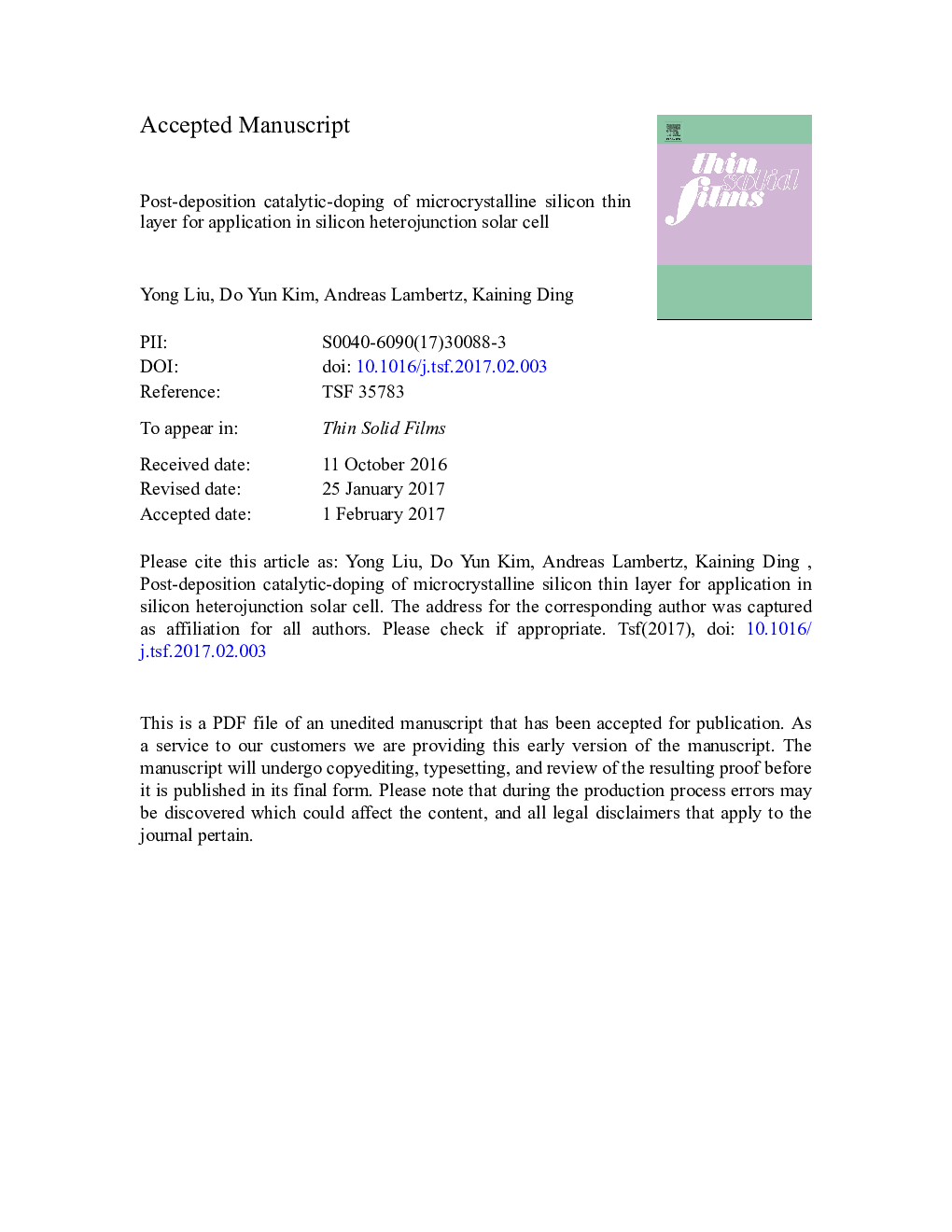| Article ID | Journal | Published Year | Pages | File Type |
|---|---|---|---|---|
| 5465971 | Thin Solid Films | 2017 | 15 Pages |
Abstract
The silicon heterojunction (SHJ) solar cell is one of the most promising candidates for the next-generation high-efficiency mainstream photovoltaic technology. It consists of a crystalline silicon wafer coated with a stack of functional thin-films on both sides. Conventionally, intrinsic and doped hydrogenated amorphous silicon (a-Si:H) is used as the passivation layer and emitter or back surface field (BSF), respectively. Hydrogenated microcrystalline silicon (μc-Si:H) is considered as a more advantageous alternative to the a-Si:H emitter and BSF layers due to μc-Si:H's higher electrical conductivity giving rise to lower series resistance. In this contribution, we use the catalytic doping process, so-called “Cat-doping”, to post-dope n-μc-Si:H thin-layers in such a way that the conductivity can be increased to higher levels than those achievable in as-grown n-μc-Si:H for the application in SHJ solar cells. We show that the conductivity of the μc-Si:H films notably increases after the Cat-doping. We also investigated the impact of Cat-doping on the conductivity of the different μc-Si:H and on lifetime.
Related Topics
Physical Sciences and Engineering
Materials Science
Nanotechnology
Authors
Yong Liu, Do Yun Kim, Andreas Lambertz, Kaining Ding,
